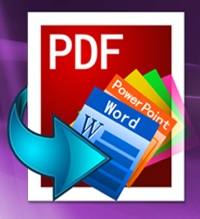FOR IMMEDIATE RELEASE
Pliable Display Technology SDK 2.1 and PDT 3d SDK Released by IDELIX
-New SDKs offer efficient integration of PDT within partners’ leading
applications-
VANCOUVER, British Columbia – December 10, 2002 – Two months after beta
release, IDELIX(TM) Software Inc. has released both Version 2.1 of the
Pliable Display Technology (PDT) Software Development Kit and the PDT 3d
SDK. Evaluation copies of these SDKs are available to qualified applicants
through the IDELIX Partner Program.
Pliable Display Technology was developed as a solution to the problems
encountered when working with high-density 2D information and 3D models
within the spatial limitations of a display screen. With existing viewing
tools it is difficult to understand how, when zoomed into a detailed region
of interest, this information relates to the rest of the data set that
would otherwise have been zoomed off the screen. PDT provides a more
efficient method of working with data by enabling end users to view
important detail without losing sight of the surrounding information. Case
study results have shown that the integration of PDT provides a more
intuitive workflow process resulting in plus 20% efficiency gains achieved
by the end user.
The PDT SDK 2.1 features the core functionality of the Pliable Display
Technology geometry engine for two dimensional data applications. It
consists of documented libraries and an API that includes support for major
platforms such as the Windows(R) desktop family, Windows CE, and Unix(TM)
variants such as Linux(TM) and IRIX (TM). New to the PDT SDK is a completed
port for Mac OS X (R) development, backed by a Mac specific example,
product demo, and development support team. By supporting Mac OS X, IDELIX
is expanding its technology reach to Mac-centric graphic artists,
publishers and digital imaging professionals who can experience significant
productivity gains through advanced “detail-in- context” viewing and
editing capabilities.
PDT 3d SDK is a new product from IDELIX that extends “detail-in-context”
viewing functionality to three-dimensional models, such as mechanical
drawings. The PDT 3d SDK is built on the existing API of PDT, and offers a
way to see an area of interest that is “occluded” or blocked from view by
the objects visible in front of it. 3D lenses essentially extend a cone or
cylinder toward an object of interest within a 3D model, displacing
impeding objects to the outside of the cone or cylinder. Contextual
information is preserved, with minimal adjustment to the original
structure. This provides users a clear line-of-sight into a model. PDT 3d
provides a strong point-of-entry for IDELIX into the Defense, CAD/CAM,
Electronic Gaming, and Medical Imaging markets.
“Our development team has done an outstanding job incorporating feedback on
the beta release and improving the ease of PDT integration for our
partners,” announced IDELIX President and CEO, Bijan Sanii. “The
introduction of our 3D technology in combination with the new port for Mac
OS X development opens significant market opportunity to the IDELIX
business development team and offers a promising start to Q1 of 2003.”
The SDKs were written in ANSI C++, and are available to Original Equipment
Manufacturers (OEM’s) and System Integrators that are interested in
integrating PDT as a solution within their leading applications. The PDT
SDK supports OpenGL(R) but also includes the PDT Image Warper for
hardware-independent rendering of images. For more information on how to
participate in the IDELIX Partner Program and apply for an evaluation copy
of the SDKs, visit: http://www.idelix.com/partners_join.shtml?id=mr20021210.
About IDELIX
IDELIX Software Inc. is changing the status quo of data and image
presentation through innovations in Information Visualization. Combining
its core technology, Pliable Display Technology (PDT), with partner and
client applications, IDELIX is reshaping the way in which businesses and
individuals view and edit information. Current market opportunities for PDT
include: Government and Defense, Digital Imaging, Geographic Information
Systems & Remote Sensing, Electronic Media, Computer Aided Design, Medical
Imaging, and Electronic Games.



